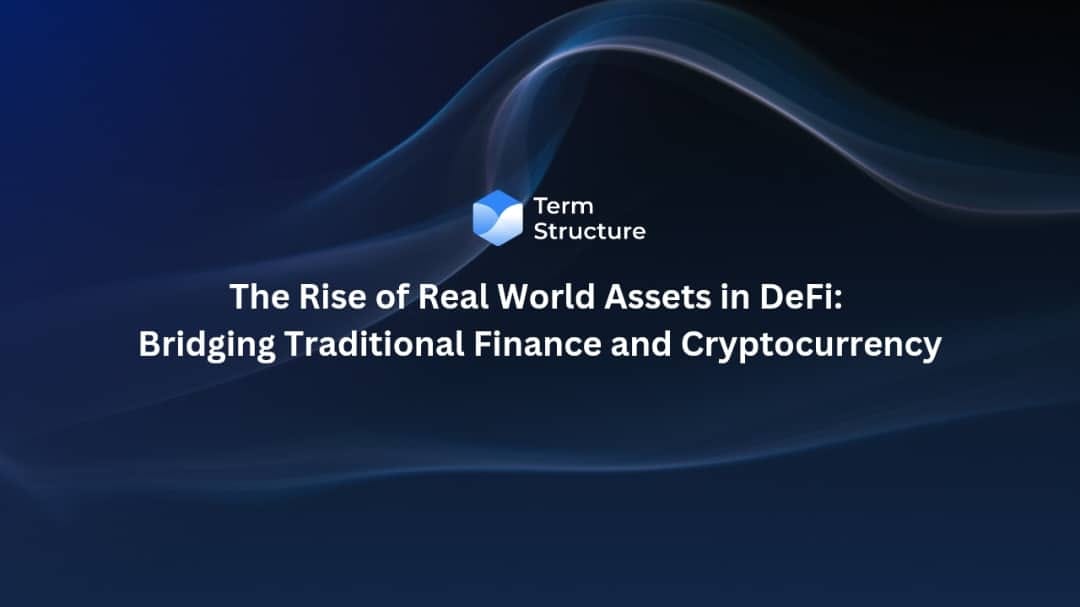The Rise of Real World Assets in DeFi: Bridging Traditional Finance and Cryptocurrency.

The intersection of decentralized finance (DeFi) and traditional finance (TradFi) is evolving, with the emergence of Real World Assets (RWA) playing a pivotal role in this transformation. As DeFi yields are diminishing and inconsistent, investors are increasingly looking to RWAs as a new avenue for generating returns.
This article explores the significance of RWAs in the crypto space, the challenges they face, and highlights some of the leading protocols that are pioneering this shift.
Understanding Real World Assets (RWA)
Real World Assets refer to tangible assets that exist in the physical world, such as real estate, commodities, art, and government securities like US Treasuries. The global financial landscape is heavily dominated by these assets;
For instance, the value of global real estate was estimated at $326.5 trillion in 2020, while gold had a market capitalization of about $12.39 trillion. Despite their immense value in traditional finance, RWAs have been underutilized in the DeFi sector, primarily limited to fiat-backed stablecoins like USDT and USDC.
The tokenization of RWAs presents an opportunity to increase liquidity within DeFi markets and offers a novel asset class for investors seeking yield that is less susceptible to the volatility typically associated with cryptocurrencies. In recent months, there has been a marked increase in interest surrounding on-chain US Treasuries, which provide a low-risk mechanism for yield generation.
The Shift from DeFi to RWA
The DeFi ecosystem experienced explosive growth in 2021, peaking at a total value locked (TVL) of $181.22 billion. However, following significant market events such as the collapses of Terra's Luna and FTX, the TVL plummeted throughout 2022 and most of 2023. This decline was exacerbated by inflationary pressures on token values, which dropped by over 90%, leading many investors to pivot their capital back into the more stable TradFi market.
As traditional finance yields began to outpace those in DeFi, market participants sought higher and more sustainable returns. This search has led to a renewed focus on RWAs in DeFi, with interest peaking at nearly $6.3 billion in October 2024. The integration of RWAs into DeFi protocols is seen as a promising solution to restore investor confidence and diversify portfolios.
Prominent RWA Protocols
Several protocols are at the forefront of integrating RWAs into the DeFi landscape:
stUSDT
stUSDT is recognized as the first RWA platform on the TRON network, contributing over $239.37 million to RWA TVL. Users can stake USDT to earn an annual percentage yield (APY) of approximately 4.18%, receiving stUSDT as proof of investment in real-world assets. The protocol primarily invests user assets into government bonds through its RWA DAO.
Ondo Finance
With a TVL of around $650.74 million, Ondo Finance has emerged as a significant player in RWA tokenization. It allows stablecoin holders to invest in highly liquid exchange-traded funds (ETFs), offering yields between 4.5% to 7.76% APY based on risk levels. Recently, Ondo launched USDY, a tokenized note backed by short-term US Treasuries and bank deposits, providing an institutional-grade yield structure.
Backed Finance
With a TVL of $23M, Backed Finance focuses on tokenizing structured products tied to publicly traded securities through its bToken system. Each bToken is backed 1:1 by an equivalent security held by regulated custodians. This approach democratizes access to investment opportunities in publicly traded securities, particularly benefiting individuals in emerging markets who often face barriers to entry.
The Role of Credit Protocols
Credit protocols in DeFi facilitate lending and borrowing activities by connecting borrowers, (often businesses or individuals seeking capital) with lenders who are willing to provide funds.
Unlike traditional lending systems that rely heavily on credit scores and collateral, many DeFi credit protocols operate on the principles of transparency, decentralization, and smart contracts.
In addition to traditional investment vehicles, credit protocols have gained traction within the DeFi space by facilitating access to capital for businesses through RWAs:
MakerDAO
MakerDAO (has been rebranded to Sky) has been instrumental in integrating RWAs into its operations. Approximately 80% of its fee revenue now derives from these assets. The protocol's future vision includes acquiring physically resilient RWAs that will allow it to maintain technical sovereignty over its collateral while adapting to regulatory scrutiny.
Creditcoin
Creditcoin connects fintech lenders in emerging markets with DeFi investors by recording loan performance on-chain for transparency and trustless auditing. Its upcoming upgrade promises enhanced compatibility with Ethereum Virtual Machine (EVM), enabling broader access for RWA investors across multiple chains.
Maple Finance
Maple Finance is an institutional capital network providing undercollateralized loans for premium borrowers on Ethereum and Solana platforms.
Maple Finance provides an institutional capital market infrastructure that allows institutional borrowers to access loans from DeFi participants through managed pools overseen by credit professionals. This structure enables undercollateralized borrowing while ensuring rigorous due diligence processes are followed.
Challenges and Future Prospects
Despite the potential benefits of integrating RWAs into DeFi, several challenges remain:
Default Risks:
One major concern is the default risk associated with undercollateralized loans within RWA protocols.
Regulatory Scrutiny:
As interest grows in RWAs, regulatory bodies are likely to impose stricter guidelines on how these assets are managed and traded.
Market Volatility:
While RWAs may offer more stability than traditional cryptocurrencies, they are still subject to broader market fluctuations.
Nevertheless, the momentum behind RWAs indicates a promising future for their role within DeFi ecosystems. As protocols continue to innovate and adapt to changing market conditions, they may provide investors with viable alternatives for yield generation that align more closely with traditional financial instruments.
Conclusion
The integration of Real World Assets into decentralized finance represents a significant evolution in how investors can engage with both crypto and traditional financial markets. By bridging these worlds through innovative protocols and strategies, RWAs not only enhance liquidity but also offer new avenues for diversification and yield generation amidst an ever-changing economic landscape. As this sector continues to mature, it will be essential for stakeholders to navigate the accompanying challenges while capitalizing on the opportunities presented by this transformative trend in finance.

